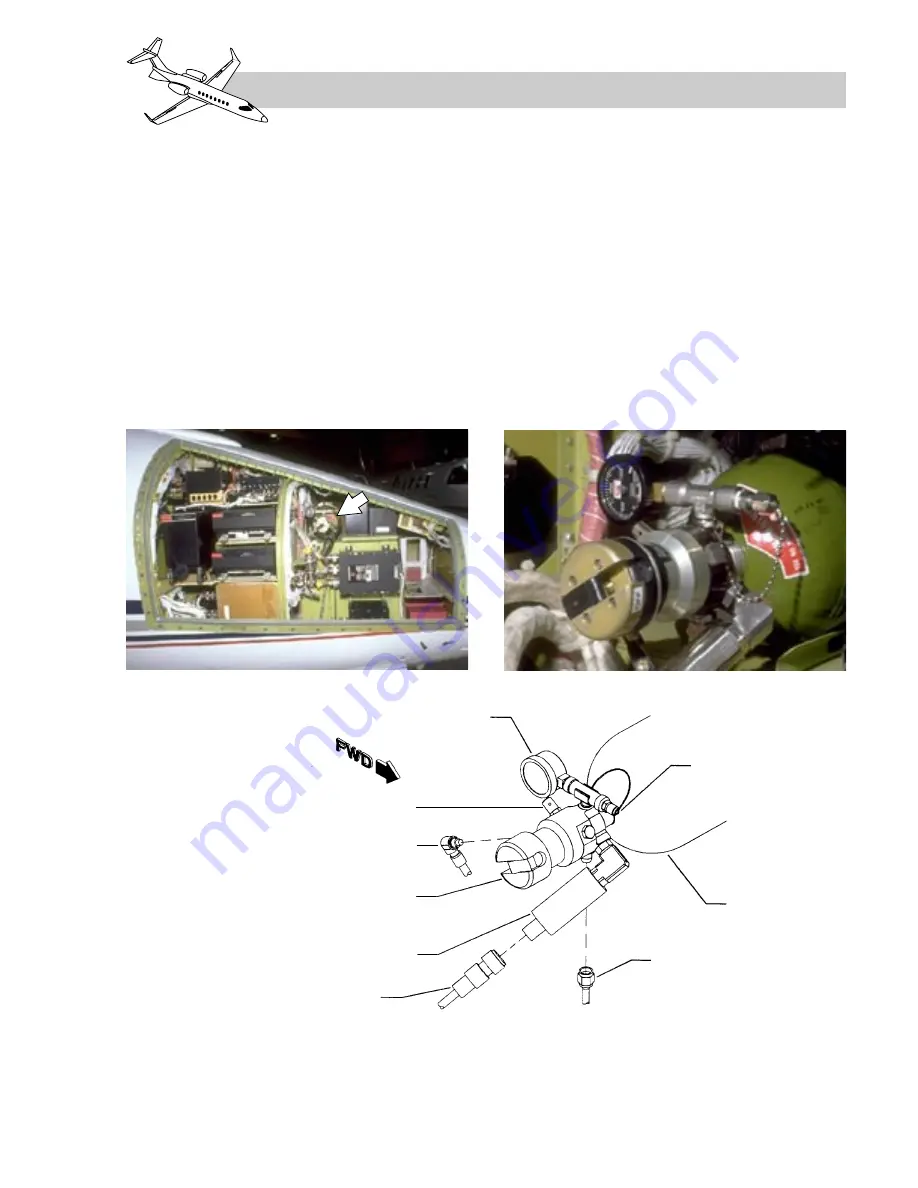
provides the means of isolating the oxygen
supply from the distribution system. With the
manually positioned shutoff valve closed, oxy-
gen flow to the crew and passengers is inhib-
ited and an amber CAS message, “OXYGEN
OFF” is annunciated to alert the crew.
The oxygen shutoff valve is manually posi-
tioned with a flip tab on the end of the regu-
lator/shutoff valve (Figure 17-2). There are
placards indicating the OFF and ON positions.
When opened, and a demand for oxygen is
initiated, the shutoff valve regulates oxygen
output to between 60 and 80 psig. It also in-
corporates ports for servicing the cylinder, a
low pressure outlet, a pressure/transducer con-
nection, temperature sensor, high pressure re-
lief, and low pressure relief.
Whenever the oxygen cylinder shutoff valve
is open, oxygen is only available to both crew
masks. Oxygen will not be available to pas-
senger masks unless selected by the crew or
automatically if cabin pressure is lost.
Under normal conditions, the shutoff valve
should always remain in the open (ON) posi-
tion and is normally safety-wired to this po-
17-3
FOR TRAINING PURPOSES ONLY
L E A R J E T 4 5
P I L O T T R A I N I N G M A N U A L
FlightSafety
international
PRESSURE
GAGE
LOW PRESSURE
RELIEF VALVE
CABIN SUPPLY
LINE
OXYGEN CYLINDER
SHUTOFF/REGULATOR
VALVE
OXYGEN CYLINDER
TRANSDUCER
ELECTRICAL
CONNECTOR
OVERBOARD
DISCHARGE
LINE
OXYGEN CYLINDER
CHARGING
VALVE
Figure 17-2. Oxygen Supply Cylinder










































